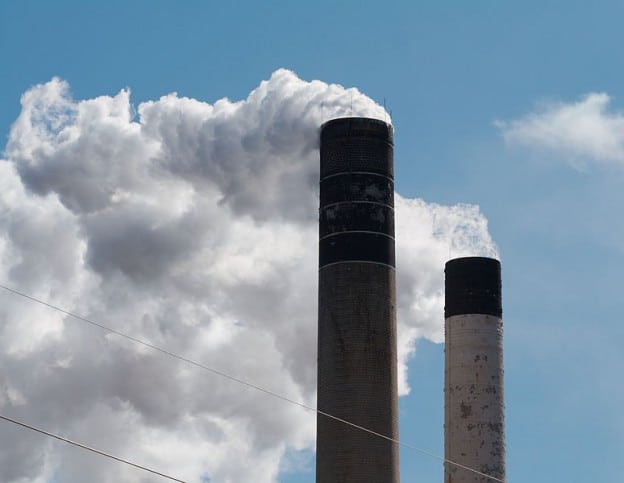Getting to Net-Zero GHG Emissions Will Take More Than Closing Coal Plants

The UK will host the 26th UN Climate Change Conference of the Parties (COP26) in Glasgow, Scotland, next month. The roughly two-week-long event will bring together delegates from around the world with a goal of securing global net-zero greenhouse gas (GHG) emissions by 2050, among other things. To reach that target, organizers have said countries need to accelerate the phase-out of coal, curtail deforestation, speed up the switch to electric vehicles, [and] encourage investment in renewables."
However, it's worth noting that achieving all of those aims will still not get the world to net-zero. There are hard-to-reach emissions" that would still need to be addressed to realize the ultimate COP26 goal.
The Final 25%Electricity, transport, and heating account for about 80% of GHG emissions, and most countries are focusing on these sectors in their efforts to achieve net-zero goals. Obviously, that's good-you should always target the low-hanging fruit first-but reaching net-zero means dealing with the other 20% of emissions also. Sectors such as agriculture, plastics, cement, and waste can't be overlooked, and reducing emissions in those industries could be even more difficult than in the larger-GHG-emitting sectors. Furthermore, some experts believe we must extract at least an extra 5% of CO2 emissions from the atmosphere to account for emissions that we simply cannot cut. Together, this is known as the final 25%."
Oxford University, which has been ranked #1 in the Times Higher Education World University Rankings for the last five years ahead of such renowned U.S. institutions as Stanford, Harvard, and MIT, has said, Net Zero cannot be achieved without tackling this hard-to-reach wedge." On August 5, Oxford's Smith School of Enterprise and the Environment published findings from its Final 25%" project. The project called on the expertise of leading industry, investor, academic, civil society and policy minds to lay out roadmaps of investment to give us a fighting chance of meeting Net Zero with technology." The findings are contained in three keynote reports covering: the use of polymers; nature-based solutions for GHG removal; and alternative proteins.
In a press release issued in conjunction with the findings, Dr. Katherine Collett, lead author of the three reports, said, Mitigating climate change demands more than a shift to renewable electricity generation; investment in harder-to-abate sectors is already required. To reach Net Zero, intersections between plastics, proteins and plants, three seemingly unconnected systems, may hold the key. Our reports explore the potential of these systems in detail, pointing the way forward for research, policy development, regulation, and financing options."
Changing Eating Habits and AgricultureIn one of the reports, the Oxford researchers said food production directly and indirectly accounts for more than 26% of GHG emissions annually (aggregating emissions of different gases using the 100-year Global Warming Potential). The report specifically notes that animal products account for almost 60% of food-related emissions, or 16% of annual global GHG emissions. It says, Plausible projections suggest the demand for animal products will increase a further 35% by 2050," driven in large part by increased consumer wealth in emerging economies such as India and China.
There are alternatives, however. Plant-based proteins such as tofu, nuts, peas, and beans can take the place of meat in the human diet. I know this because I've been vegan for several years and have never felt healthier. For those who believe they could never remove meat, dairy, and eggs from their diet, it's not as difficult as you may think. I found eliminating cheese was the hardest, but nowadays, innovative companies have created cheese substitutes, which, although probably not any healthier for a person than the real thing, can help people adjust to the change, much like a nicotine patch helps people quit smoking.
On top of being affordable, easy to produce, and scalable, the report says these alternative proteins hold two major environmental advantages compared to animal-related products. Firstly, in a world powered by zero-emission energy, production of alternative, zero-emission protein is possible. Of course, we're not there yet. Secondly, the land no longer needed for grazing or growing animal feed could be ecologically restored to provide a one-off natural CO2 sink, offering much-needed GHG removal services.
A substantial 82% of agricultural land is currently used to produce animal-related products," the report claims. If alternative proteins displaced all animal-related products (clearly a theoretical maximum), the overall potential for the released agricultural land to sequester CO2 could be 900 Gt [Gigatonnes] CO2 over 100 years, after which sequestration rates would decrease."
To put that in perspective, the Environmental Protection Agency reports that U.S. GHG emissions from all sources (including from the big contributors-electricity, transport, and heating) totaled 6.558 Gt of CO2 equivalents in 2019. Therefore, the released agricultural land could sequester all of that and more (on an annual average basis). Now, imagine if the CO2 emissions from the Big Three" are cut dramatically-the world could even end up net-negative.
Achieving a Net-Zero FutureThe coal-fired power industry has long been the whipping boy for environmental activists. Indeed, in the foreword to COP26 Explained," a 25-page document designed to prepare people for the Glasgow event, Alok Sharma, COP president-designate, bragged: In 2012, 40% of our [the UK's] electricity came from coal. That figure is now less than 2%." He continued, We will completely phase out coal power by 2024 and will end the sale of new petrol and diesel vehicles by 2030."
Yet, focusing on coal and other fossil fuels is not enough. World leaders must also work to mitigate the final 25%." It's the only way to reach net-zero.
-Aaron Larsonis POWER's executive editor.
The post Getting to Net-Zero GHG Emissions Will Take More Than Closing Coal Plants appeared first on POWER Magazine.